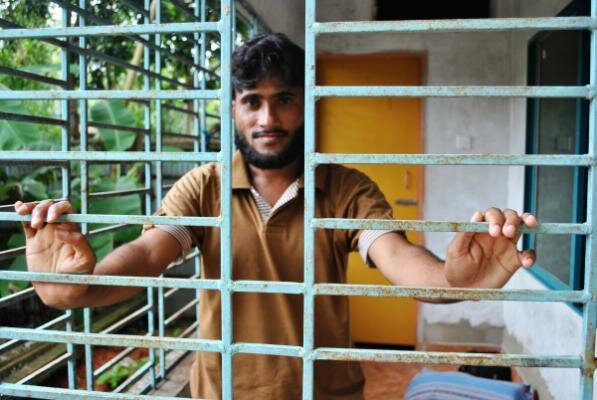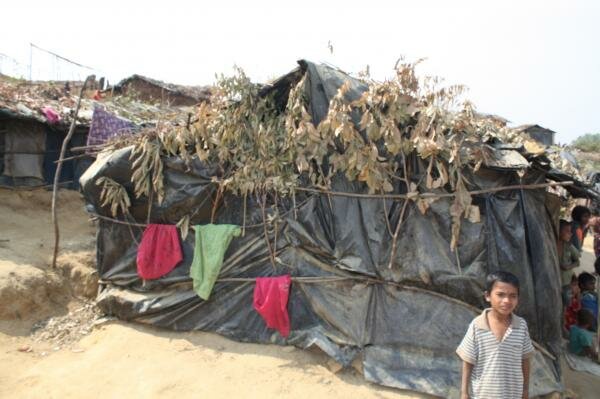More Rohingya boat people set to flee violence
Thousands of Rohingya may head to Malaysia after last month’s deadly sectarian violence in western Myanmar.
 “The risk factor is certainly there,” Chris Lewa, director of the Arakan Project, an advocacy organization for the Rohingya, told IRIN. “Many simply feel they have no other choice. Bangladesh has closed its borders so there is no other escape.”
“The risk factor is certainly there,” Chris Lewa, director of the Arakan Project, an advocacy organization for the Rohingya, told IRIN. “Many simply feel they have no other choice. Bangladesh has closed its borders so there is no other escape.”
“More people are getting on boats to get to Malaysia,” Phil Robertson, the deputy director of the Asia Division of Human Rights Watch, said. “This year might be one of the largest sailing seasons [of Rohingya refugees going to Malaysia from the two countries].”
According to UN Refugee Agency (UNHCR), there are more than 24,000 Rohingya refugees and asylum seekers in Malaysia today.
Close to 110,000 mostly Rohingya residents are displaced in Myanmar following inter-communal violence between Muslim Rohingya and ethnic (mainly Buddhist) Rakhine residents, and need humanitarian assistance, the UN Office for the Coordination of Humanitarian Affairs (OCHA) reported on 5 November.
On 21 October, more than 35,000 people were displaced across eight Rakhine townships (Kyaukpyu, Kyauktaw, Minbya, Mrauk-U, Myebon, Pauktaw, Ramree and Rathedaung) after a wave of inter-communal violence resulted in 89 deaths and the destruction of more than 5,000 homes and buildings.
In earlier violence in June, dozens were killed and some 75,000 Rohingyas were displaced following the alleged rape of a Rakhine woman by a group of Muslim men in May. Most of the displaced are staying in nine overcrowded camps in Sittwe, the capital of Rakhine State.
Despite the presence of thousands of soldiers and police, security across Rakhine remains tense, while access for aid workers is increasingly proving problematic. OCHA says more displacements are likely. "The situation is still very, very volatile, it's very tense. The government is doing its very best to keep the situation under control, but it's still very fragile,” said Jens Laerke, an OCHA spokesman.
Bangladesh responded to the June violence by enforcing its “closed door” policy more strictly, leaving the Rohingyas in Rakhine State - described by the UN as one of the most persecuted minorities in the world - in an even tighter spot. Bangladesh is already home to more than 200,000, mostly undocumented Rohingya refugees, and Dhaka insists it is in no position to accept any more.
 A dangerous voyage
A dangerous voyage
Thousands could well seek shelter in Malaysia, an escape that requires undertaking a dangerous voyage across the Indian Ocean often in rickety, and overcrowded boats ill-equipped to make the journey, said Maung Kyaw Nu, president of the Burmese Rohingya Association in Thailand.
“Whether they are able to get to Malaysia is another issue,” he said. Many of those getting on the boats are desperate enough to shell out more than US$1,500 for the passage, he added.
Many think the risk is worth it. Mohammad Johar, an undocumented Rohingya in the town of Teknaf in southeastern Bangladesh bordering Rakhine State, is already plotting his escape after saving up money for almost a year, and motivated by his longstanding fear of life back in Myanmar.
“Many things can go wrong. The boat’s motor can stop working. The authorities can try to stop you, since what we’re doing is illegal,” the 23-year-old said.
Groups of 20-30 passengers are typically picked up in the dead of night from various areas in Chittagong, Cox’s Bazaar, and Teknaf in southeastern Bangladesh, he explained, from where they are transferred to larger boats at sea.
On 31 October, one such boat on its way to Malaysia reportedly sank. Some 130 Rohingyas on board are believed to have drowned.
“I have learned that last year perhaps as many as 50 percent of all boat refugees died,” said Maung Kyaw Nu.

















